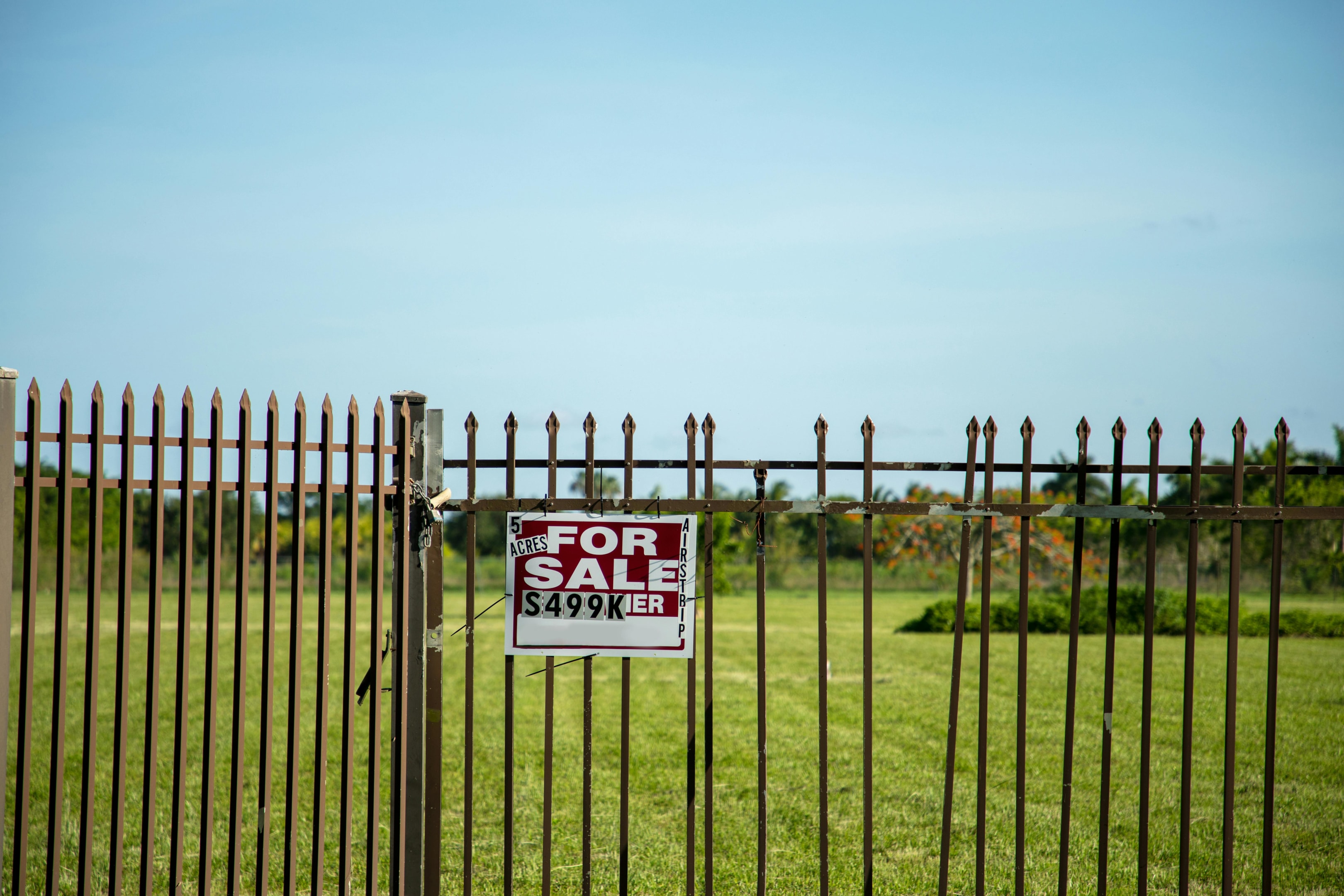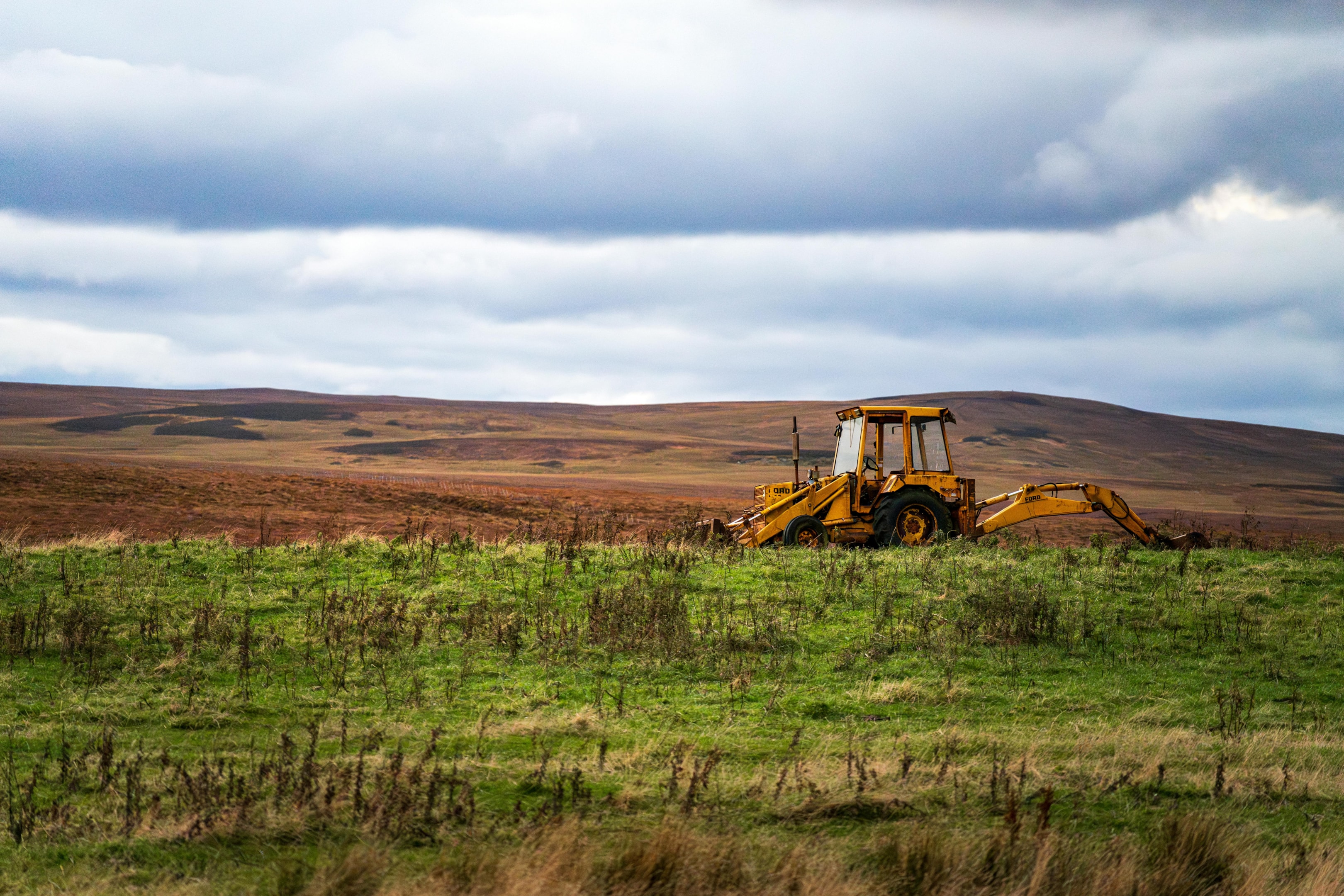The Ultimate Guide to Land Investment: How to Build Wealth with Raw Land
Investing in land is one of the most overlooked yet profitable opportunities in real estate. Unlike traditional real estate investments, property investment in land requires minimal maintenance, has lower upfront costs, and can appreciate significantly over time. Whether you're a beginner or an experienced investor, understanding the strategies behind land investment can help you build long-term wealth.
This comprehensive guide will walk you through everything you need to know about land investment, from different types of land to financing options and exit strategies.

Introduction to Land Investment
What is Land Investment?
Land investment is the process of buying, holding, or developing land with the goal of making a profit. Unlike houses or commercial properties, land is a fixed, limited resource, making it a valuable long-term asset.
Why Invest in Land?
Many investors overlook land, but it offers unique advantages. One of the primary benefits is minimal maintenance, as it requires no tenants, repairs, or property management, making it a hands-off investment. Additionally, land in growing areas has the potential for high appreciation, especially when purchased below market value, allowing for significant profit over time. Investors also enjoy flexible exit strategies, as they can choose to sell, lease, or develop the land to maximize returns. These factors make land investment an attractive option for those seeking to diversify their investment portfolios and build wealth.
Common Misconceptions About Land Investing
"Land is a risky investment." — While it carries inherent risks, conducting thorough due diligence and understanding market dynamics can significantly mitigate these risks, making land a viable investment option.
"Land doesn't generate income." — Contrary to this belief, land can be a source of income by leasing it for agriculture, storage facilities, or renewable energy projects like solar farms, providing various revenue streams.
"Land is hard to sell." — Although it might seem challenging, with the right marketing strategies and understanding of target buyers, land can be sold efficiently to developers or individuals looking to invest in promising areas.
Understanding Different Types of Land Investments
Raw Land vs. Developed Land
Raw Land — Raw land is completely undeveloped, lacking essential infrastructure such as utilities, roads, or zoning approvals. This type of land offers a blank canvas for investors looking to capitalize on future development opportunities. While it may require a longer-term commitment, raw land can be purchased at a lower cost and has the potential for significant appreciation as surrounding areas develop. Investors often seek raw land in strategic locations with anticipated growth, allowing them to maximize their return on investment when the land's value increases over time.
Developed Land — Developed land comes equipped with essential infrastructure, including roads, utilities, and zoning approvals, making it ready for immediate use or construction. This type of land is typically more expensive than raw land due to the existing improvements and the reduced risk associated with development. Investors interested in developed land often look for properties that align with specific projects, such as residential subdivisions, commercial centers, or mixed-use developments. The upfront costs may be higher, but the potential for quicker returns and reduced development timelines can make developed land an attractive option for those seeking to capitalize on existing infrastructure.

Residential vs. Commercial Land
Residential Land — Residential land is designated for housing developments, including single-family homes, townhouses, and multi-family units. This type of land is in high demand in areas with growing populations and urban expansion. Investors interested in residential land often focus on locations with access to schools, parks, and amenities that appeal to homebuyers. The potential for steady appreciation and rental income makes residential land a popular choice for those looking to invest in the housing market. Additionally, residential land can offer opportunities for subdivision, allowing investors to maximize profits by selling individual lots to homebuilders or private buyers.
Commercial Land — Commercial land is intended for business use, including retail spaces, office buildings, and industrial facilities. This type of land is typically located in areas with high traffic and visibility, making it ideal for businesses seeking to attract customers and clients. Investors interested in commercial land often focus on locations with strong economic growth and demand for commercial space. The potential for high rental income and long-term leases makes commercial land an appealing option for those looking to diversify their investment portfolio. Moreover, commercial land can offer opportunities for mixed-use developments, combining residential, retail, and office spaces to maximize profitability and create vibrant, multi-functional communities.

Agricultural Land and Farmland Investments
Agricultural land is valuable for farming, ranching, and timber harvesting, making it a crucial part of the agriculture industry. Tillable acres offer significant potential for financial returns through leasing land to farmers. The increasing value of tillable land presents opportunities for both investment and profit, whether it transitions into development property or remains as productive farmland. Timber farms are an attractive investment opportunity for small investors, generating ongoing income while enabling land ownership. Investment vehicles like ETFs that focus on timber companies also make timber farms a viable option for those looking to invest in the agricultural sector without direct management responsibilities. Farmland investments provide steady cash flow from leasing to farmers.
Evaluating Land for Investment
Evaluating land for investment involves a thorough analysis of various factors to determine its potential for growth and returns. Here are some key considerations for land investors:
Location: The location of the land is crucial in determining its value and potential for growth. Look for areas with high demand, proximity to urban centers, and access to infrastructure.
Zoning and Land-Use Regulations: Understand the zoning and land-use regulations in the area to determine the allowed uses of the land and any potential restrictions.
Topography and Soil Quality: The topography and soil quality of the land can affect its suitability for different uses, such as agriculture or construction.
Utilities and Infrastructure Access: Confirm that the land is equipped with essential utilities such as water, electricity, and road access.
Environmental Factors: Consider any environmental factors that may impact the land, such as flood zones, wetlands, or endangered species habitats.
Market Demand: Research the local market demand for different types of land uses, such as residential, commercial, or agricultural.
Competition: Analyze the competition in the area, including the number of similar land parcels available for sale.
Growth Potential: Evaluate the potential for growth in the area, including any planned developments or infrastructure projects.
By carefully evaluating these factors, land investors can make informed decisions about the potential of a land parcel and its potential for returns.

Benefits of Investing in Land
Investing in land offers several benefits, including low competition since fewer investors focus on land compared to homes and commercial properties. It serves as a hedge against inflation, maintaining its value over time. Additionally, there is passive income potential, as land can be leased for various purposes such as farming, parking, or outdoor advertising, providing a steady revenue stream without the need for active management.
Best Strategies for Land Investment
1. Buying Undervalued Land for Appreciation
Purchasing land in developing areas before demand increases allows investors to buy below market value and hold the property for several years, eventually selling it at a profit. This strategic approach takes advantage of the land's potential appreciation as the surrounding area grows, making it a lucrative investment opportunity for those willing to wait for the right moment to sell.
2. Land Flipping for Quick Profits
Land flipping involves buying land at a discount, often from tax auctions or motivated sellers, improving it through actions like clearing, rezoning, or adding infrastructure, and then selling it to developers or investors at a higher price. This strategy allows for quick profits by enhancing the land's value and appeal, making it an attractive option for those looking to capitalize on short-term gains in the land investment market
3. Leasing Land for Passive Income
Renting land to farmers, solar companies, or storage businesses can provide steady passive income. Additionally, setting up billboards or cell towers on your land can generate recurring revenue. For those seeking indirect exposure to the agricultural sector, investing in exchange traded notes (ETNs) offers an alternative method to gain financial benefits from agricultural commodities and farming operations without the need for direct land ownership.
How to Find the Best Land Deals
To find the best land deals, consider a multi-faceted approach. Start by exploring county tax auctions, which often feature distressed land available at a fraction of its market value. This method can uncover hidden gems that other investors might overlook. Additionally, networking with real estate agents and land brokers can provide insider knowledge and access to exclusive listings that aren't widely advertised. These professionals can offer valuable insights into market trends and potential opportunities; to learn more read Mastering Real Estate Networking: Successful Strategies for Success.
Furthermore, utilize online platforms such as LandWatch, LandFlip, and Zillow to search for land based on your specific criteria, such as location, price range, and intended use. These websites offer a comprehensive database of listings, making it easier to compare options and identify promising investments.
USLeadList is a valuable resource for land investors seeking to uncover lucrative opportunities. By leveraging their extensive database, investors can access a wide array of motivated land sellers not readily available through traditional channels. This platform specializes in providing high-quality leads, allowing investors to target sellers that align with their investment goals. Their data is sold to only one investor per state, ensuring exclusive access to lead to greater success. This targeted approach not only saves time but also maximizes the potential for profitable land investments. To learn more, go to their website and get in contact with the team to see if your state is available.

The Raw Land Purchase Process
The raw land purchase process involves several steps, from initial research to closing the deal. Here's an overview of the process:
Research and Identification: Identify potential land parcels that meet your investment criteria, including location, zoning, and market demand.
Due Diligence: Conduct thorough due diligence on the land parcel, including reviewing title reports, surveying the property, and assessing environmental factors.
Negotiation: Negotiate the purchase price and terms with the seller, including any contingencies or conditions.
Contract Signing: Sign a purchase agreement outlining the terms of the sale, including the price, payment terms, and closing date.
Inspections and Testing: Conduct inspections and testing, such as soil tests and environmental assessments, to ensure the land is suitable for its intended use.
Financing: Secure financing for the purchase, including obtaining a loan or using cash.
Closing: Close the deal by transferring ownership of the land and completing any necessary paperwork.
Engaging the services of experienced professionals, such as real estate agents and attorneys, is crucial to ensuring a seamless and successful raw land purchase process.
Due Diligence Before Buying Land
1. Check Zoning and Land Use Restrictions
Ensure the land can be developed or used according to your plans and check for any environmental protection laws that might impose restrictions on its use. This step is crucial to avoid potential legal issues and ensure your investment aligns with your intended purposes.
2. Conduct Soil and Environmental Tests
Test soil for farming or construction purposes.
Check for flood zones, wetlands, or contamination risks.
Consider mineral development lands as an investment opportunity. These lands can generate ongoing income streams and are a viable option for those looking to engage in land ownership without the demands of extensive farming operations.
3. Verify Legal Ownership and Title Records
Ensure the seller has clear ownership of the land by verifying legal ownership and checking for any outstanding liens or legal disputes. This step is crucial in avoiding potential complications during the land investment process, ensuring a smooth transaction and protecting your investment from unforeseen legal challenges.
Land Valuation and Appraisal
Land valuation and appraisal involve determining the value of a land parcel based on various factors, including its location, zoning, and market demand. Here are some common methods used to value land:
Comparative Market Analysis: Compare the land parcel to similar properties in the area to determine its value.
Income Approach: Estimate the potential income generated by the land, such as rental income or agricultural production.
Cost Approach: Estimate the cost of replacing or reproducing the land, including the cost of acquiring and developing the property.
Residual Land Value: Estimate the value of the land after deducting the cost of any improvements, such as buildings or infrastructure.
Land appraisal involves a thorough analysis of these factors to determine the value of the land. It's essential to work with experienced appraisers to ensure an accurate and reliable valuation.

How to Finance Land Investments
1. Paying Cash vs. Financing
Cash offers provide faster closings and discounts.
Land loans have higher interest rates and shorter terms.
2. Using Seller Financing
Negotiate with the seller for flexible payment terms.
Avoid traditional bank financing for faster deals.
3. Alternative Funding Options
Use private lenders or crowdfunding platforms.
Partner with investors to split land acquisition costs.
Develop an internal road system to enhance property value. Accessible internal roads can improve timber quality and make the property more attractive for activities like hunting and trail riding.
Managing and Maintaining Your Land Investment
Managing and maintaining your land investment involves ongoing activities to ensure its value and potential for returns. Here are some key considerations:
Property Taxes: Pay property taxes on the land to avoid penalties and fines.
Insurance: Obtain insurance to protect against risks such as natural disasters, liability, and theft.
Maintenance: Regularly inspect and maintain the land, including any improvements, to ensure its condition and value.
Leasing: Consider leasing the land to generate income, such as agricultural leasing or recreational leasing.
Monitoring Market Trends: Continuously monitor market trends and adjust your investment strategy accordingly.
Record Keeping: Keep accurate records of the land's ownership, valuation, and any transactions or activities related to the property.
By actively managing and maintaining your land investment, you can ensure its value and potential for returns over time.
Conclusion
Land investment is a powerful wealth-building strategy that demands a combination of patience, thorough research, and strategic planning. Unlike other real estate investments, land requires minimal maintenance, freeing investors from the burdens of tenant management or property upkeep. This unique advantage, coupled with the potential for multiple income streams, makes land investment particularly appealing. Opportunities such as leasing for agriculture, renewable energy projects, or recreational purposes provide steady revenue while the land appreciates over time. Furthermore, the long-term appreciation potential of land, especially when acquired in developing areas, offers significant profit opportunities. By investing in land, you not only diversify your portfolio but also position yourself to generate consistent returns, making it an excellent choice for both novice and seasoned investors.